1944 Gibson J-45
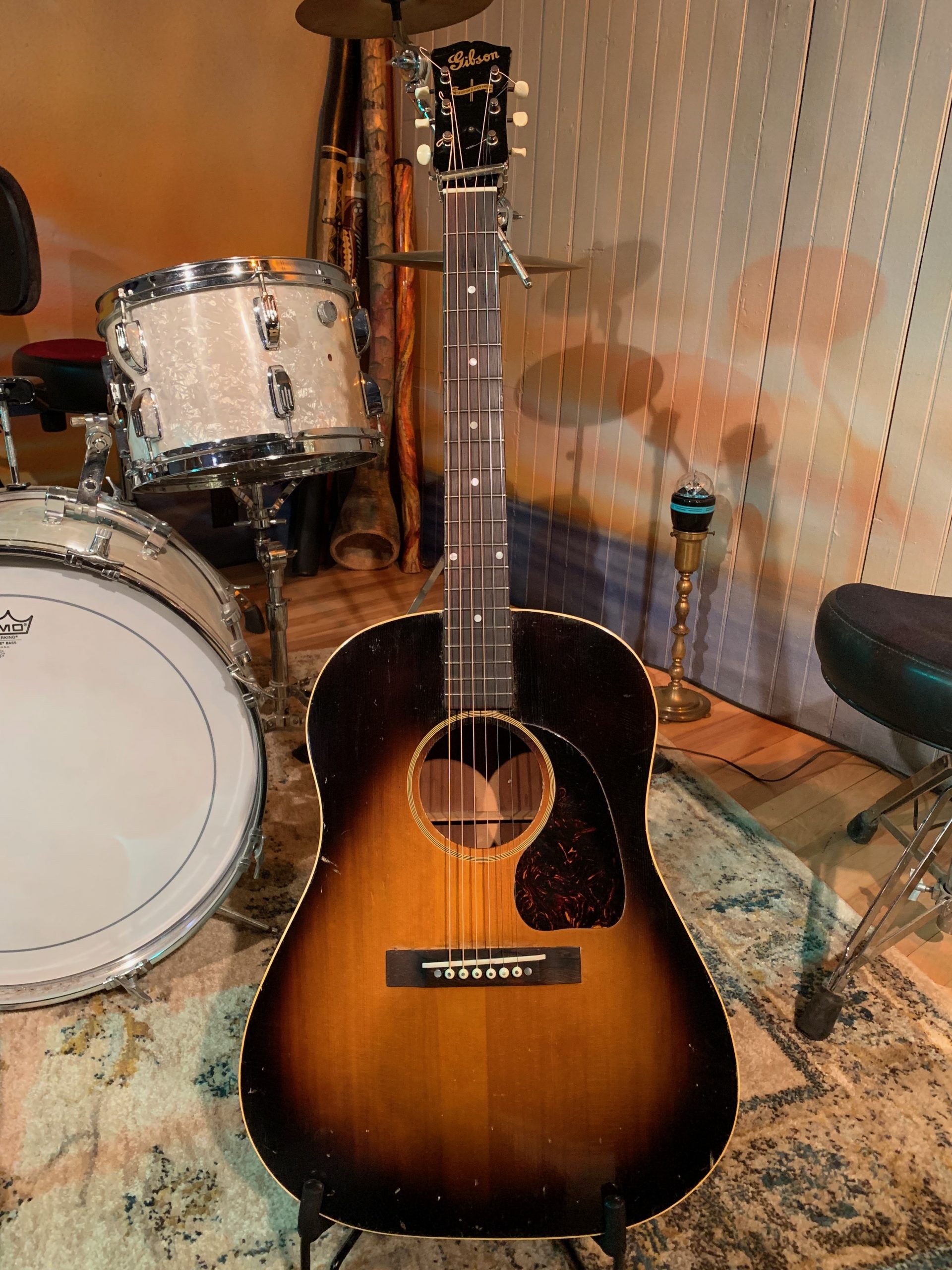
1944 J-45 “Workhorse”
This J-45 spent maybe 60 years with the same strings. It wasn’t until 2015 that it went to the luthier.
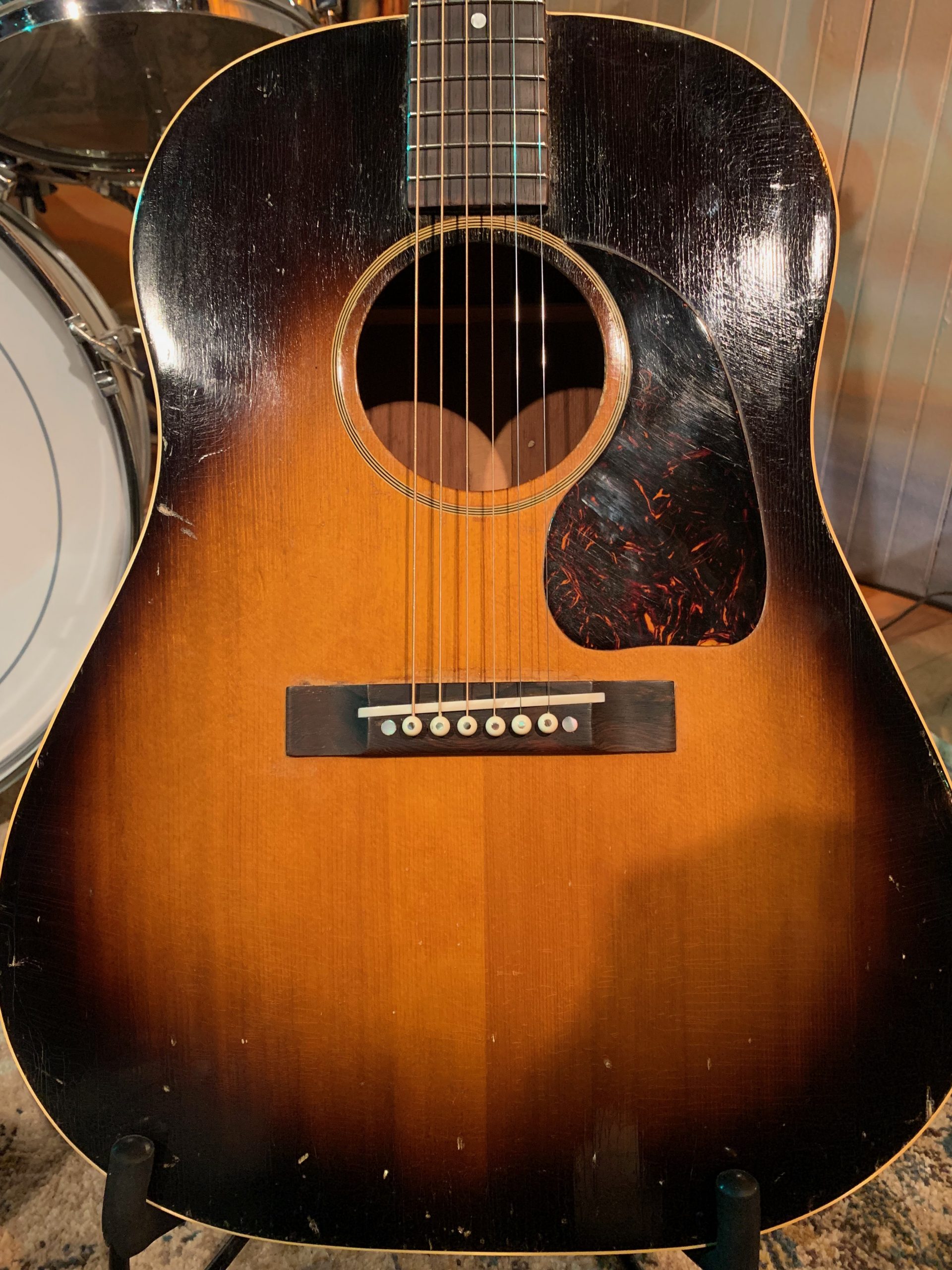

This guitar was my grandfather’s guitar, passed down to me through my mother. The nickname for this guitar is “Workhorse” and it was made in the Kalamazoo Gibson Plant.
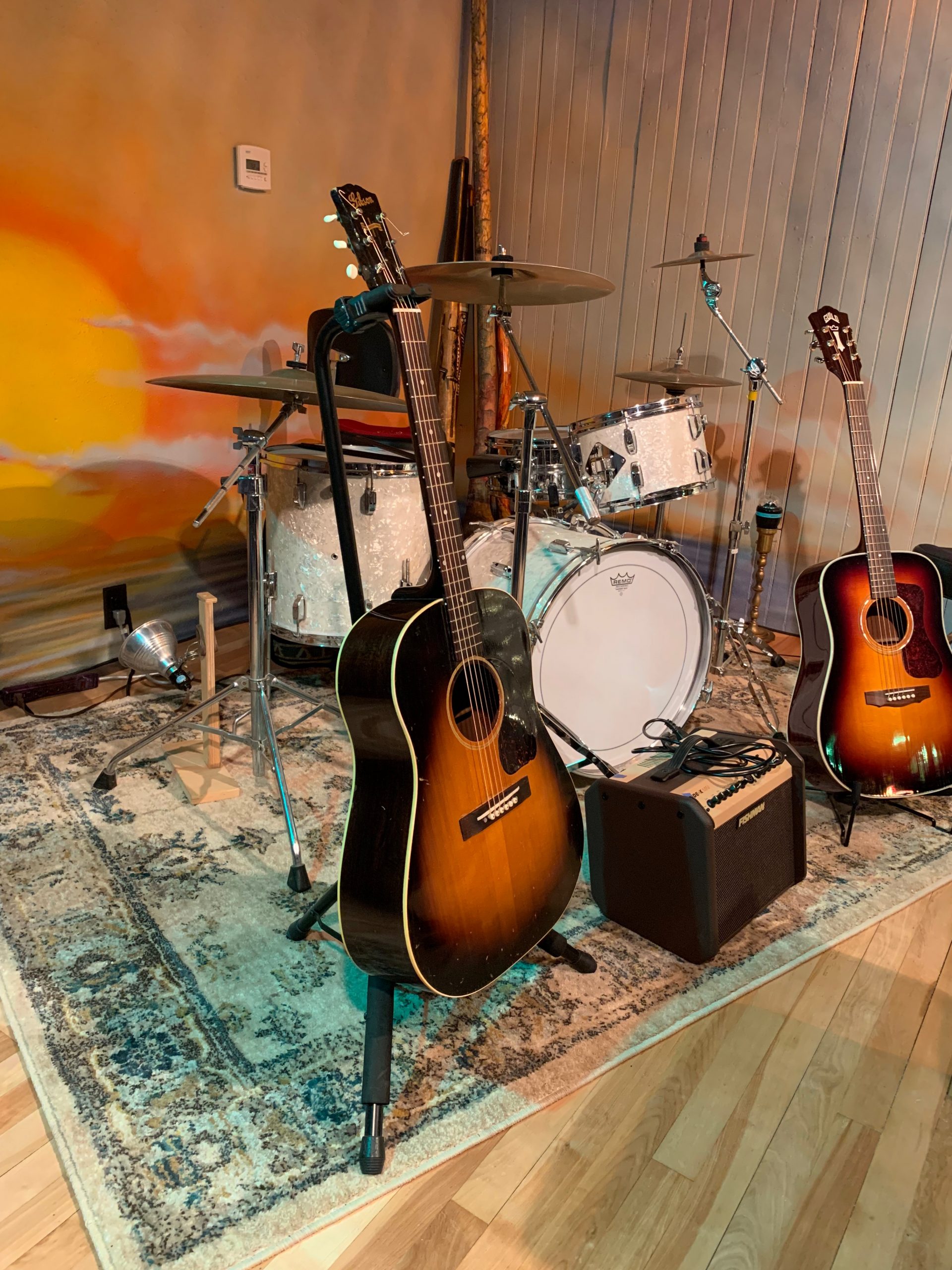
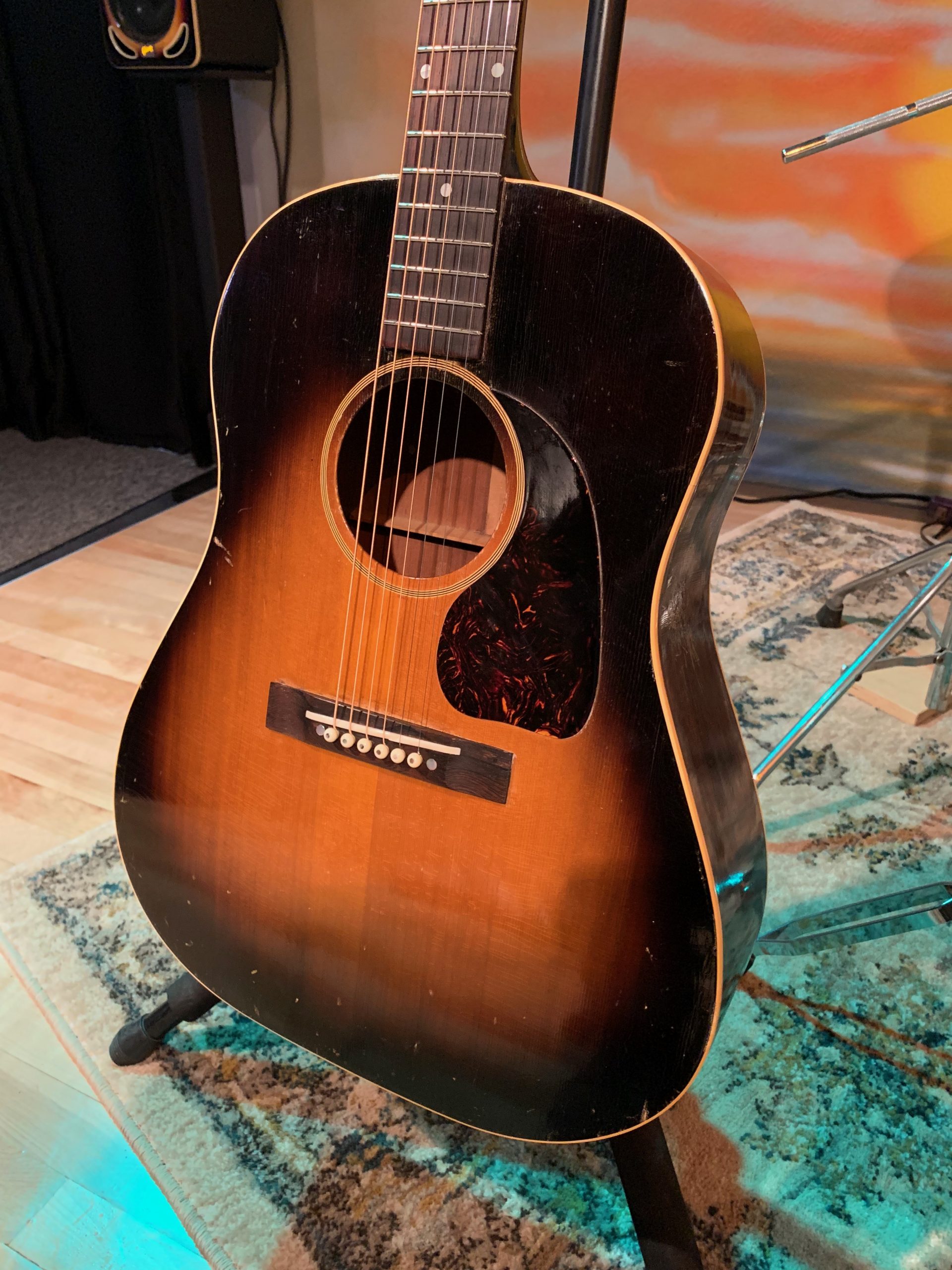
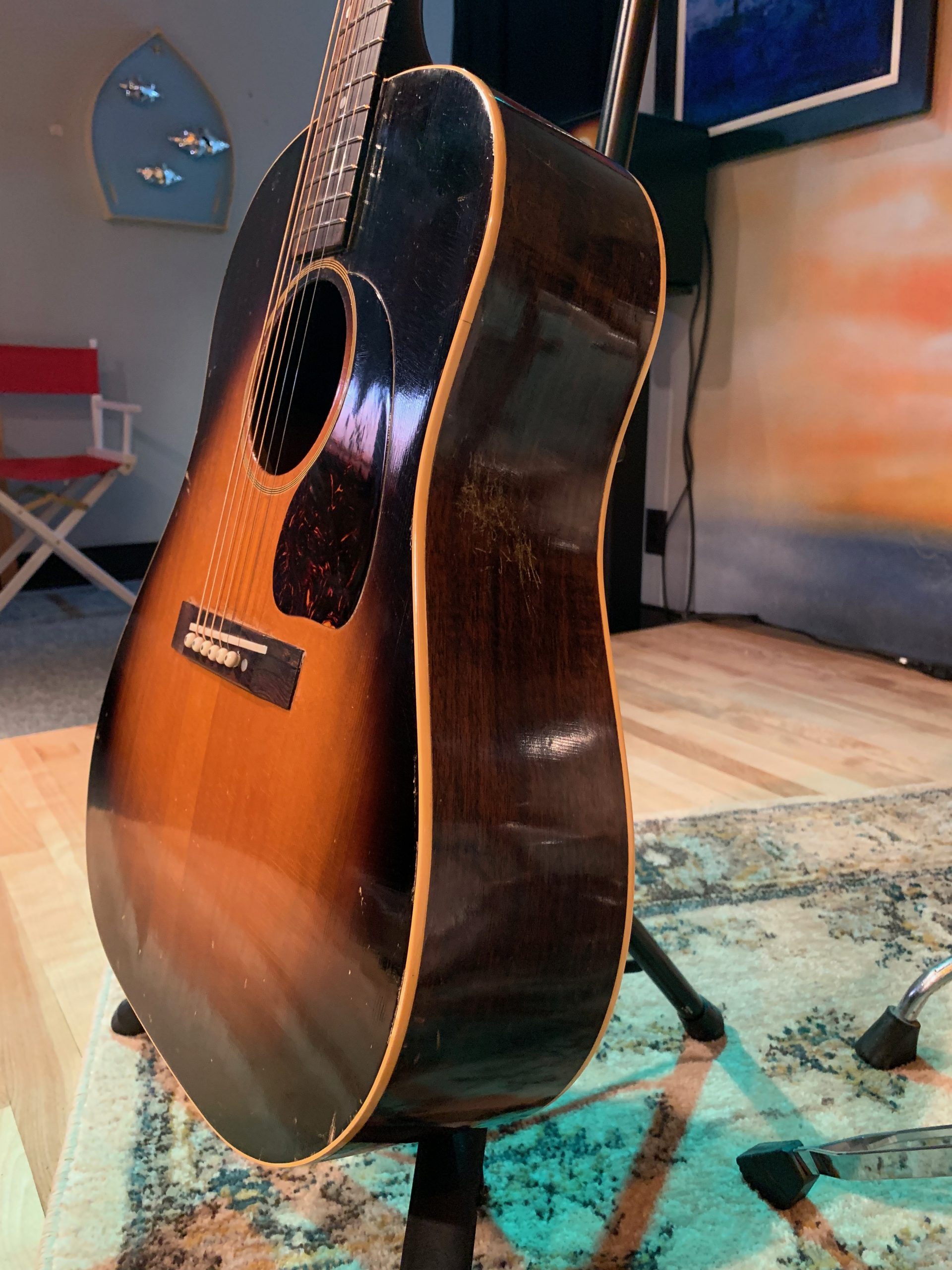
It has mahogany back and sides, a spruce top, Brazilian rosewood neck and bridge.


It has it’s original tuners. They were untouched for maybe 50 plus years, and they work great.
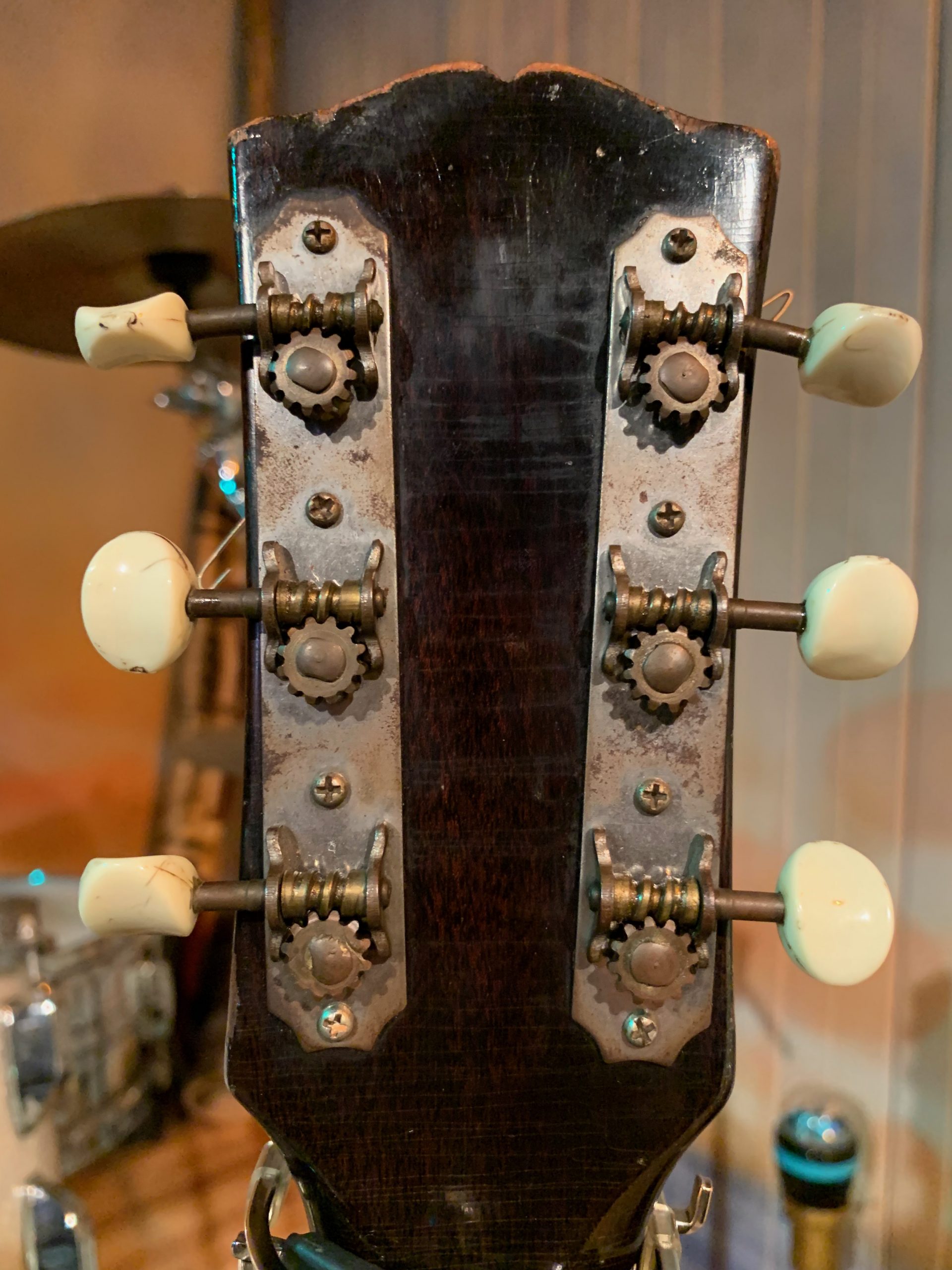
The guitar was just detailed and new medium ga. phosphor Bronze D’ Addario strings were put on.
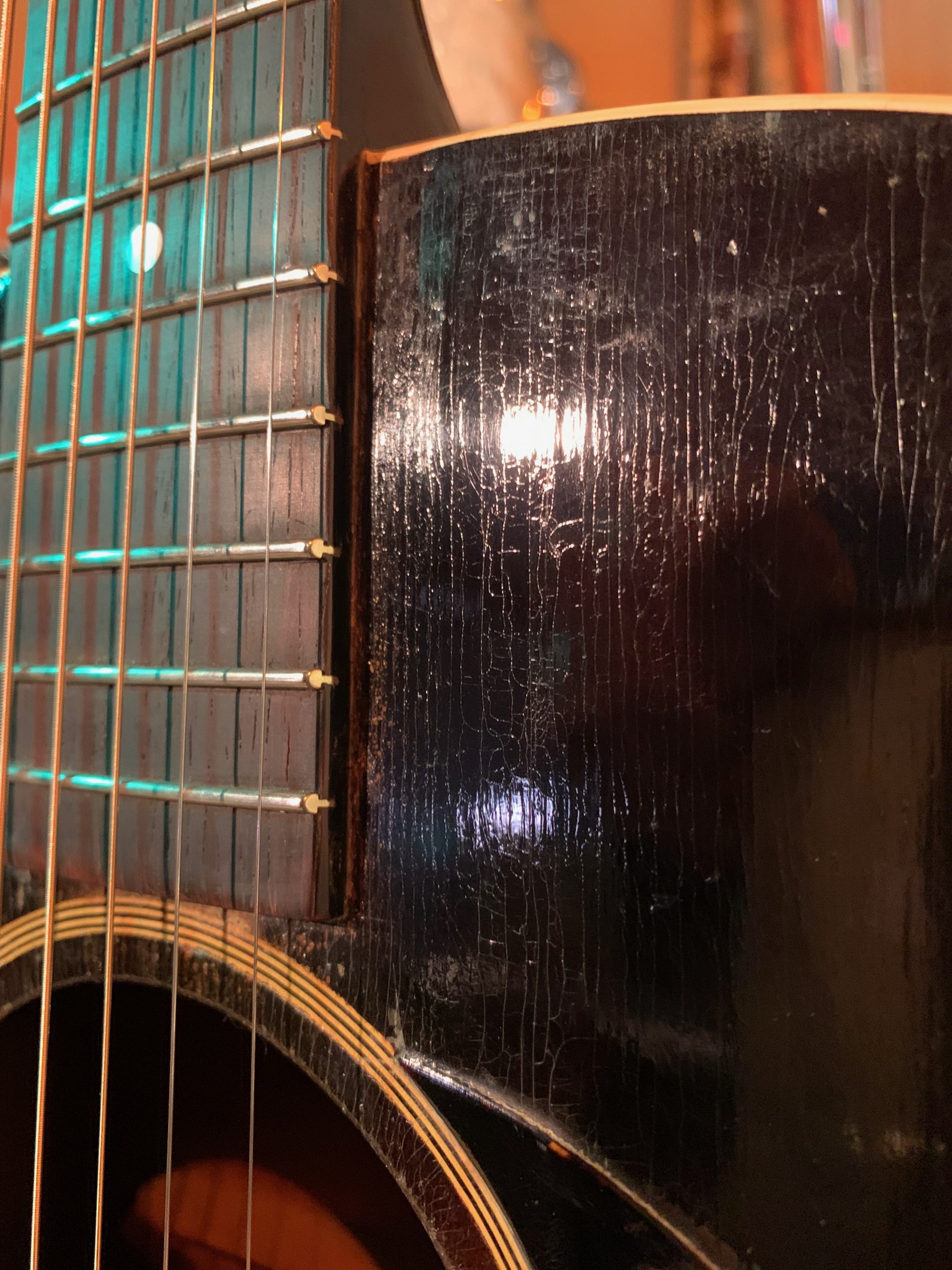

My Families’ Gibson 1944’ish J-45 “Workhorse”
as written by Donovan Brooke, Jan 13th, 2022
I was gifted this guitar by my mother. Though my mother is not a guitar player or enthusiast herself, she was the major factor in keeping this guitar safe for many decades. My mother knew nothing of proper care / storage of a vintage guitar. She valued the guitar simply because it was her grandpa’s guitar. It is likely due to the combination of my mother’s sentiment for “grandpa’s guitar” and always having kept a clean (and humidified) house, that this guitar survived in such a good condition for all these years.
The guitar, perhaps, lived half of it’s, now 79, years in a guitar case and half of it on a stand, mostly at my mother’s houses. The guitar lived, perhaps, 60 years with a broken bridge where 60 year old strings were “permanently” glued into the bridge pin holes with hide glue. This original bridge can be found in the storage compartment in the case.
My great grandpa bought this guitar new. He was a mortician, thus where the hide glue came from, and he was the one who “fixed” (quite literally) the bridge.
As the story goes, my uncle inherited the guitar and took the guitar with him to college. Apparently, my mother went to visit him as he was having a party in his dorm room. Well, my mother witnessed a party go’er just about to pour beer in the sound hole and she immediately reacted, grabbing the guitar, and telling my uncle that he could no longer have the guitar. My uncle did not argue.
Maybe 47 or so years later in 2015, I received the guitar (still with the glued-in strings). I was the eldest of 3 siblings and probably the one who always showed the most interest in the guitar. Because I am a novice player, I *really* wanted to make the guitar a player guitar. That began some careful Luthier work over several years which transformed the guitar back to a functional, well-playing, guitar.
Two luthier’s have touched this guitar:
John Currier (Currier Guitars – Steven’s Point, WI )
Anthony (Tony) Louscher (Luthier’s Workshop / Jasmine Guitars – Green Bay, WI )
Tony did most of the serious work, culminating with a complete hydration, and belly to neck, to fret board work-over in 2020. The guitar is in great playable condition today. Here is the rundown of the work that was last done:
Long (months) Hydration
Belly Work
Neck Reset
New (period correct) Bridge and Pins
Fret Replacement and Dressing
Some notes about the guitar:
– The guitar retains the original tuners.
– I could not find a serial number ( which, I understand, is fairly common for these guitars )
Personally, I was very careful about every decision that went into the work on this guitar. This guitar is very close to my heart and I made sure that everything was done right. After all was said and done ( 3 years, 3 luthier visits, around $2,000, and almost daily playing by myself ), I am very happy with the state of the guitar that it is in today. Nothing was taken away from it’s true past, and the work that was done simply restored it’s inspiring playability.
This guitar was built by an all-women workforce known as the Kalamazoo Gal’s. They are the wives and daughters of soldiers who remained at home and who took over the jobs of building these guitars during war time. They were widely remembered as excellent craftsmen.
Recently, I had the honor, via John Thomas, of playing Happy Birthday to the last surviving Kalamazoo Gal, Irene Stearns, who turned 100 in January 2022.
To learn more about the Kalamazoo Gal’s and the guitars they built, check out John’s recent book at his website: http://kalamazoogals.com/
In summary, it occurs to me that this guitar was created, and survived, by the grace of great women, Including my mother. It is because of their care that this guitar shines today as a valuable, and pleasurable-to-the-ear, example of American Musical History.
